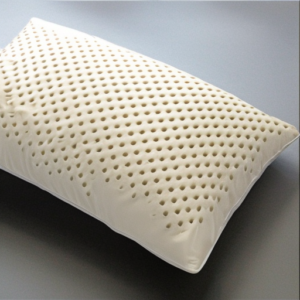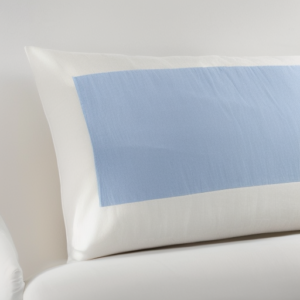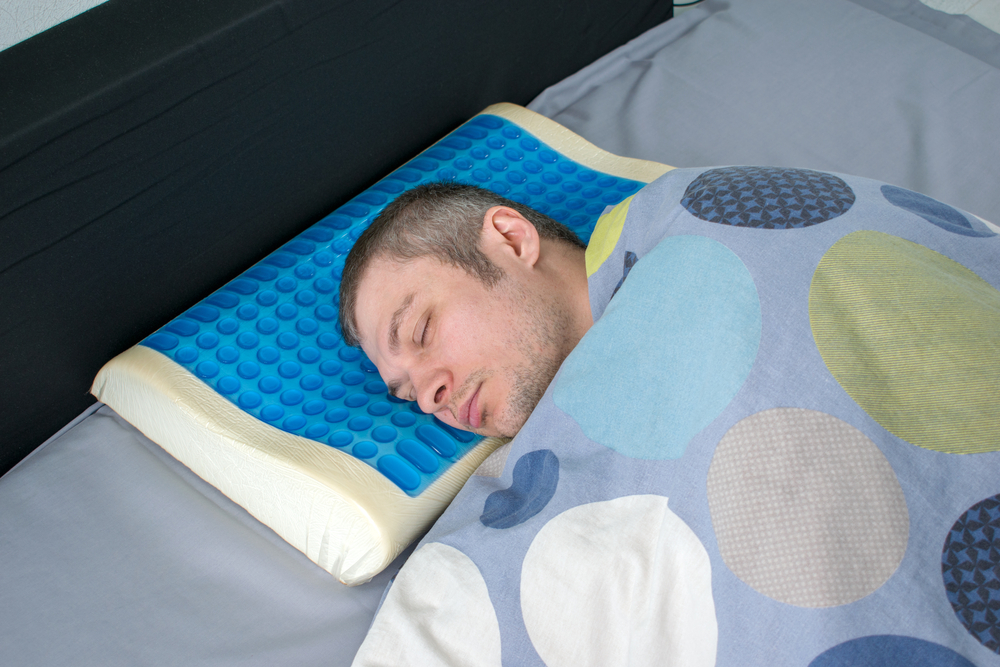Last Updated on February 14, 2023
Are you looking for the perfect pillow to help you sleep soundly? Have you considered memory foam pillows vs latex alternatives? If not, don’t worry – we’ve got it covered. Our comprehensive guide will compare and contrast both types of materials so that by the end of this blog post, you’ll know which type is best suited for your needs. Comfortability, durability, temperature regulation and eco-friendliness are just some aspects that we’ll explore in depth. So read on to find out more about memory foam pillows vs latex options – who knows what might surprise you?
Table of Contents:
- Comfortability
- Durability
- Temperature Regulation
- Eco-Friendliness
- FAQs in Relation to Memory Foam Pillows vs Latex
- Conclusion
Comfortability
When it comes to comfort, memory foam and latex pillows are two of the most popular choices. Memory foam is a synthetic material that conforms to your body shape and provides support for your head and neck. It’s known for its softness, which makes it great for side sleepers who need extra cushioning around their shoulders. Latex pillows are made from natural rubber tree sap, making them more eco-friendly than memory foam options. They’re also bouncier than memory foam so they provide more support while still being comfortable enough to sleep on.
Memory foam pillows offer excellent pressure relief due to their ability to contour closely around the head and neck area. This helps reduce tension in those areas by evenly distributing weight across the pillow surface as you move during sleep. The slow response time of memory foam also means that it won’t cause any sudden movements or jolts when you change positions throughout the night.
Latex pillows have a firmer feel compared to memory foam but still, provide good support for your head and neck without feeling too hard or uncomfortable against your skin. Unlike some other materials, latex won’t flatten out over time, so it will maintain its shape even after years of use – this makes them ideal if you prefer sleeping on something firm yet supportive at the same time. Plus, because they don’t absorb heat like other materials do, latex pillows stay cool all night long, which can help improve the overall quality of sleep too.
When it comes to comfortability, memory foam pillows provide superior cushioning and support compared to latex pillows. However, when considering durability, there are a few more factors that need to be taken into account before making a decision.
Durability
When it comes to choosing a pillow, durability is an important factor. Memory foam and latex pillows are two of the most popular options on the market today, but which one offers more durability?
Memory foam pillows offer superior comfort due to their ability to conform to your head and neck shape. They also have excellent temperature regulation capabilities that help keep you cool in summer and warm in winter. However, when it comes to durability, memory foam can be less reliable than other materials. Over time, memory foam can become compressed or lose its shape due to wear and tear from regular use. The average lifespan of a memory foam pillow is around three years with proper care; however, some may last longer depending on usage habits.

Latex pillows are made from natural rubber tree sap that has been processed into a soft material similar in feel to memory foam but with added bounce for extra support. In terms of durability, latex is known for being highly resistant to wear and tear while maintaining its shape over time better than many other materials, including memory foam. Latex pillows typically last between five and seven years with proper care, making them much more durable than their counterparts.
In conclusion, when comparing the durability of memory foam and latex pillows, it is clear that latex offers superior longevity. Latex pillows are highly resistant to wear and tear while maintaining their shape over time better than many other materials, including memory foam. On average, a latex pillow can last between five and seven years with proper care compared to the three year lifespan of a memory foam pillow under normal conditions.
When it comes to durability, memory foam pillows may be more resistant to wear and tear over time than latex pillows; however, when it comes to temperature regulation, the differences between the two become more nuanced.
Temperature Regulation
When it comes to temperature regulation, memory foam and latex pillows have distinct differences. Memory foam is made from polyurethane with added chemicals that give the material its slow-recovery properties, meaning it will slowly return to its original shape after being compressed. This makes for a very comfortable pillow, but it also means that heat can be trapped in the foam as you sleep. Latex, on the other hand, is made from natural rubber, which has an open cell structure allowing air to circulate freely through the material. This breathability helps regulate body temperature while sleeping, so you don’t overheat or become too cold during your slumber.
Memory foam pillows are generally denser than latex ones and therefore provide more support for your head and neck when lying down. They are also good at relieving pressure points due to their ability to contour around your body as you move throughout the night. However, they may not be suitable if you tend to get hot easily since they do retain heat better than latex pillows do.

Latex pillows provide superior cooling capabilities compared to memory foam due to their open cell structure, which allows air circulation throughout the pillow core, resulting in improved ventilation and breathability while sleeping. This helps keep temperatures regulated all night long, making them ideal for those who tend to get hot easily or prefer a firmer feel under their heads. Additionally, these types of pillows are usually bouncier than memory foams and offer more movement when changing positions during sleep without having any sinking feeling into the pillow itself, like what happens with some memory foams.
When it comes to temperature regulation, both memory foam and latex pillows offer great comfort, but each has its own advantages. Now let’s take a look at the eco-friendliness of these two types of pillows and how they compare.
Eco-Friendliness
When it comes to eco-friendly home and garden products, memory foam and latex pillows are some of the most popular options. Memory foam is made from polyurethane, a petroleum-based material that can be recycled or reused in other products. Latex pillows are made from natural rubber tree sap, which is harvested sustainably and biodegradable.
Both types of pillow materials have their own environmental benefits when compared to traditional feather or down pillows. Memory foam is more durable than feathers or down, meaning it won’t need replacing as often. It also doesn’t contain any animal byproducts, so there’s no risk of animal cruelty associated with its production process. On the other hand, latex pillows are naturally hypoallergenic and antimicrobial due to their composition of natural rubber tree sap, making them ideal for those with allergies or sensitive skin conditions.

When it comes to recyclability, both memory foam and latex pillows can be repurposed into new products, such as carpet padding or insulation materials, after they have reached the end of their lifespan. This is a great advantage over traditional feather or down fillings, which must be disposed off at landfill sites instead. In addition, many companies now offer recycling services for these types of pillow materials, so you don’t even need to worry about disposing of them yourself.
Overall then, if you’re looking for an eco-friendly option when shopping for home and garden products like bedding items such as mattresses and pillows, then memory foam and latex should definitely be on your list. They provide superior comfort, and help reduce waste while still being affordable – what more could you ask for?
FAQs in Relation to Memory Foam Pillows vs Latex
Which is better pillow memory foam or latex?
It is difficult to definitively answer which type of pillow is better, memory foam or latex. Memory foam offers a contouring feel that can help provide pressure relief and support for the head and neck. Latex pillows are naturally hypoallergenic, breathable, and durable. Ultimately it comes down to personal preference as both types offer unique benefits depending on your individual needs. Consider trying out different types before making a decision so you can find the one that best suits your sleep style.
Is latex better than memory foam for back pain?
It is difficult to definitively answer whether latex or memory foam is better for back pain, as both materials have their own unique benefits. Latex mattresses are known for being more supportive and breathable than memory foam, while the memory foam offers a contouring effect that helps relieve pressure points. Ultimately, the best choice will depend on individual needs and preferences; it may be beneficial to try out different mattress types before making a decision.
Is latex better than memory foam for neck pain?
It is difficult to definitively answer the question of whether latex or memory foam is better for neck pain, as both materials have their own advantages and disadvantages. Latex offers superior breathability and support, while memory foam provides contouring comfort that helps reduce pressure points. Ultimately, it comes down to personal preference – some people may find one material more comfortable than the other. It’s important to do your research and try out different mattresses before making a decision on which type of mattress will best suit your needs.
What is the healthiest pillow filling?
When it comes to choosing the healthiest pillow filling, natural materials such as wool and cotton are generally considered the best option. Wool is naturally hypoallergenic, breathable and temperature regulating, making it a great choice for those with allergies or sensitive skin. Cotton is also an excellent choice due to its breathability and softness. Other natural materials like latex can be beneficial too; however, they may not be suitable for everyone due to their firmness. Synthetic fillings such as polyester are often cheaper but lack the same level of comfort and breathability that natural materials provide. Ultimately, each person’s needs will vary so it’s important to choose a pillow filling that suits your individual requirements for maximum comfort and support.
Conclusion
When it comes to comfortability, durability, temperature regulation and eco-friendliness, memory foam pillows vs latex is a close call. Both offer excellent support and are great for those who suffer from neck pain or backaches. However, if you’re looking for something that will last longer while also helping the environment, then latex may be the better option. Ultimately though, it’s up to you to decide which pillow best suits your needs.
Paul is the type of person who never met a problem he couldn’t fix. He can always be found tinkering with something in his house, even if it isn’t broken! His tips and tricks are often shared on our site. He’s the one you call when something breaks because he has been known to improvise fixes for everything from leaky faucets to malfunctioning dryers.

